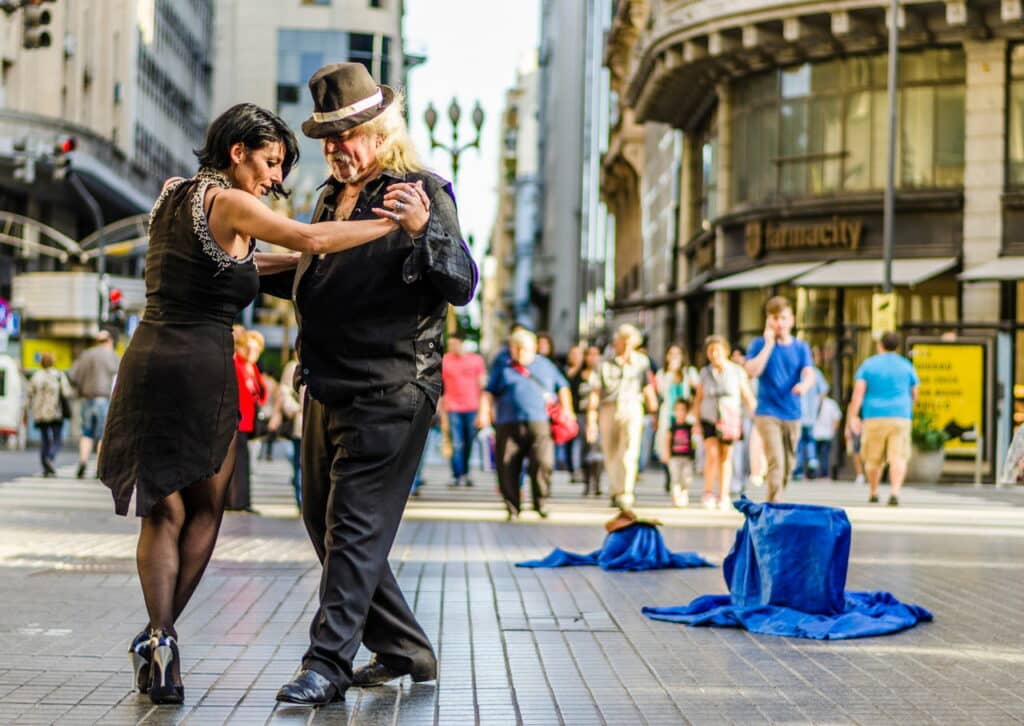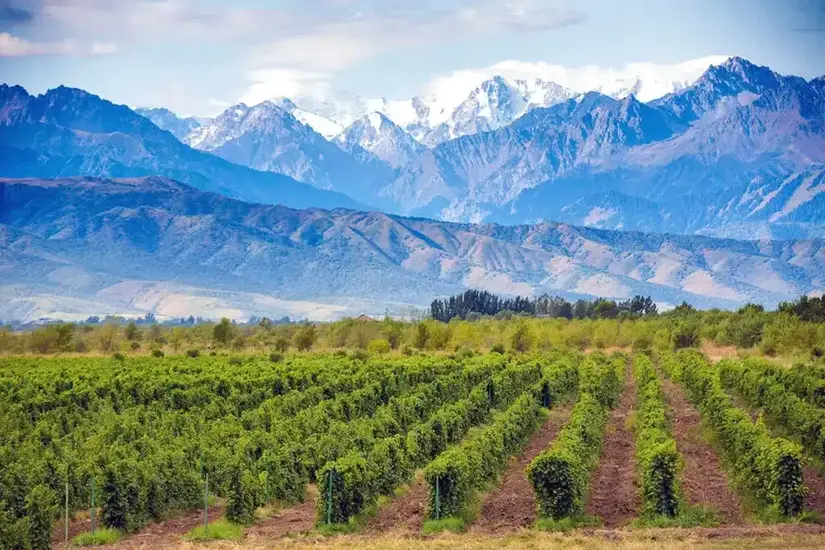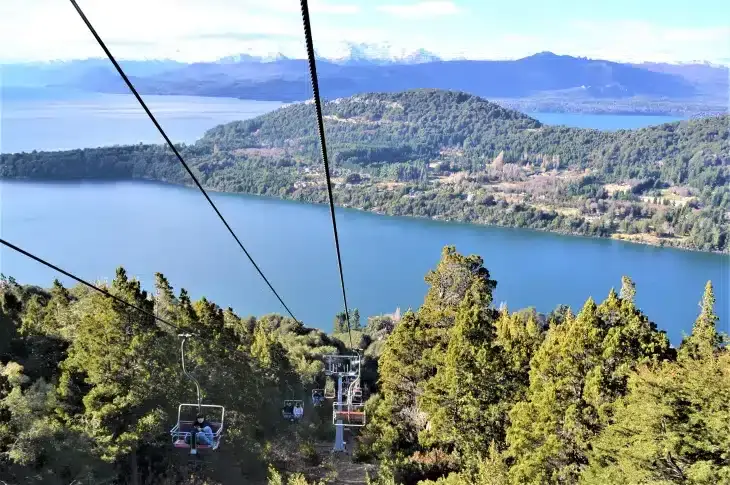Expats wondering where to retire in Argentina have a multitude of options outside of the country’s capital, Buenos Aires. Each city has its own charm that suits different lifestyles, preferences, and budgets. In this article, you might just find the best one for you.
If you have any questions or want to invest as an expat or high-net-worth individual, you can email me (advice@adamfayed.com) or use these contact options.
Introduction
Living in Argentina means experiencing a rich culture, seeing breathtaking landscapes, and participating in exciting activities at a fraction of the cost compared to other countries. A single person would need around $434.72, while a family of four would have to allocate $1,557.70 per month to live comfortably. These estimates exclude rent, which expats shouldn’t worry too much about because of its affordability. In general, living in Argentina is 50% to 60% cheaper than in the USA and EU.
Where to Retire in Argentina: Buenos Aires
Buenos Aires, the capital of the country, is a cosmopolitan city that is popular among expats. It has a temperate and sunny climate with an average temperature of 18°C. It is the coldest in the month of July, while it is a bit humid in January and February.
The cost of living in the city is $443.51 for one person a month, not including rent expenses.
The streets are always bustling with life from early morning until late at night. During the day, there are many museums, art galleries, cultural centers, churches, and shopping malls to visit. There are also numerous parks and open spaces where one can take a stroll and just unwind. The fileteado, which is the city’s very own folk art, was even declared an Intangible Heritage of Humanity by UNESCO. Culture is one of the things that the city of Buenos Aires truly doesn’t run short of.
Furthermore, its nightlife is one of the best in South America. Laughter, music, and dancing fill the craft beer bars, speakeasies, and themed clubs found throughout the city.

Tango dance halls also welcome residents all night long. This partner and social type of dance has played an important role in the culture and society of the country. Learning this dance will be a good way to immerse oneself in the lives of the locals and meet new people. But be prepared for a long night ahead. Night outs can sometimes start as late as 2am and end at 9am.
Going around the city will be no trouble with its large and efficient public transport system. They have an underground metro, buses, and trains that bring residents to different parts of Buenos Aires, even outside its center. Buses operate at all hours of the day throughout the year. One can also explore Buenos Aires on a bike with the 24-hour bike share scheme, which is offered at no cost. Taxis and car rentals are similarly available for those who want to go somewhere quickly or farther from the city.
Things to Do:
- Visit the National Museum of Fine Arts, the Museum of Modern Art, or the Museum of Latin American Art
- Shop at Galerias Pacifico, Paseo La Plaza, or Patio Bullrich
- Attend annual events such as Feria Puro Diseño, Designers Buenos Aires, and Noche de las librerías
Where to Retire in Argentina: Cordoba
Cordoba City, the capital of Cordoba province, is the second most populated city in Argentina with around 1.4 million inhabitants. It is also known as the “Heartland of Argentina” because it is right at the center of the country.
Without rent, one person would need $324 per month to live comfortably in the city. Compared to Buenos Aires, expenses for rent and dining are cheaper on average.
The general climate in the province is temperate, with differences depending on the altitude and specific city in which one resides. Temperatures often range from 10°C to 30°C. But expect January to be hotter and July to be colder than normal. In a year, the province experiences four seasons. So, make sure to prepare clothes appropriate for the weather.
Eight different spaces for culture and the arts can be found along the proposed route, “The Cultural Media League of Gold.” It is 2,500 meters long and traverses the distance from Plaza San Martin up until the neighborhood of Nueva Cordoba. One of the institutions to be included in this route is the Royal Theater. There, residents can watch performances of the Cordovan Comedy, the Children’s and Youth Comedy, and the Stable Puppet Theater.
Further along the route is the Provincial Museum of Natural Sciences “Dr. Arturo Umberto Illia.” With 3 circular floors, visitors can discover minerals, stones, the flora and fauna of Cordoba, and even true-to-life replicas of extinct species. But these are just two of the many more theaters and museums to visit during the week.
When the weekend and holidays arrive, expats can head on over to Pasaje Revol. Go around the fair for antiques, recycled items, and curiosities and find something unique for yourself or your home.

There are also beautifully constructed churches in Cordoba city, such as the Church of the Capuchins and the Basilica of San Francisco. The oldest church that has been in service ever since its establishment, the Cordoba Cathedral (Our Lady of the Assumption), can be found in the city. These are solemn places where believers can practice their faith. But if that is not the case, these structures will still captivate visitors with their intricate details and history.
The landscapes in Cordoba will never fail its residents with activities to do. They can go horseback riding, bird watching, fishing, and golfing. There is even an opportunity to appreciate different flavors of wine by following the wine route.
Getting around Cordoba means riding buses, taxis, or trains. However, residents can also hop on their bikes to get to their destination.
Things to Do:
- Eat at the top restaurants in the city, such as Bros. Comedor, El Papagayo, or SantaCalma
- Visit the Plaza de San Martin, Museo de la Memoria, or Parque Sarmiento
- Shop at Paseo de Las Artes
- Watch performances at the Teatro del Libertador General San Martín
Where to Retire in Argentina: Mendoza
The city of Mendoza is home to nearly 900,000 people, making it the fourth largest city in terms of population.
Because of its arid subtropical climate, winter is dry and mild, while summer can be unbearably hot and a bit rainy. On average, expect temperatures to be between 3°C and 31°C. Residents also get around 2,870 hours of sunshine every year.
The cost of living in Mendoza city is cheaper than in Buenos Aires and Cordoba. An individual would only need $289 a month to cover expenses for daily life. This estimate does not include rent.
Expats who have an interest in wines will feel like kids in a toy store here. The Mendoza wine region, located in the foothills of the Andes Mountains, is the largest in the country. It produces as much as two-thirds of the supply in Argentina. Mendoza Malbec, produced from the region’s flagship Malbec grape, is widely sought-after by wine connoisseurs. But there are many more fresh wines of different flavors, levels of acidity, and notes to discover. Given this, it wouldn’t be too difficult to find a winery to visit. The challenge then becomes where to go first.

Residents of the city take their siesta every day between 1pm and 5pm. During these hours, many shops, restaurants, and banks take a pause in their operations. But when the clock strikes 5pm, it’s time for tea. Coffee and pastries are enjoyed by then.
When night falls into the city, citizens are wide awake and out on the streets. Many flock to Avenue Aristides Villanueva, which is more often just referred to as Aristides by locals. This is where the main nightlife drag of Mendoza happens. Other than that, good wine and good food await. It would be a great opportunity to mingle with the locals and immerse oneself in the culture of the city.
To get around the city, one wouldn’t have trouble hailing a taxi. The Tranvía Urbano de Compras, or Urban Shopping Tram, also follows a fixed route through the downtown area. Another option would be the Metrotranvia Mendoza, which is a public light rail transport that leads to Maipu, another city in the province. But one can also enjoy walking through the streets of the city that are lined with trees.
Top Wineries in Mendoza Region:
- Bodega Familia Cassone
- Bodega Salentein
- Mevi
Things to Do in Mendoza City:
- Take a relaxing stroll in Parque San Martin, Plaza Espana, or Parque Central
- Visit the Mendoza Museum of Modern Art or Casa de Fader
- Attend the Wine Harvest Festival
Where to Retire in Argentina: Bariloche
Expats who enjoy the great outdoors can head to the city of Bariloche for thrilling adventures and awe-inspiring scenery. It is situated within the Nahuel Huapi National Park, right next to the Andes. Because of this, there are forests older than a thousand years, snow-capped mountains, and lakes clearer than you can imagine.
With numerous activities to do, it was named the Argentine Capital of Adventure Tourism in 2012. Those with a sweet tooth will also be pleased to know that it is also the Argentine Capital of Chocolate.

There, individuals can go trekking, sailing, rock climbing, cycling, and fishing, to name a few. But it’s not just limited to physical activities; the adventure continues with good food. Go out for fine dining with cuisines that seamlessly combine European and local flavors. Meals often include wild game, fish, smoked meat, cheese, and berries.
When the day activities aren’t enough, head to one of the nightclubs or pub crawls that are easily found within the city.
This lifestyle can be obtained at a very affordable cost. A single person would have to prepare $202 a month, but expenses for rent are excluded.
Things to Do:
- Canopy zip-lining, scuba diving, horseback riding, climbing, kitesurfing, paragliding
- Visit chocolate shops
Where to Retire in Argentina: Mar del Plata
Mar del Plata is the seventh most populous city in Argentina, with around 500 thousand inhabitants. It has a temperate oceanic climate, with temperatures in this coastal city ranging from 8°C to 26°C. Because of this, Mar del Plata relies on fishing and tourism for its economy. For residents, this means enjoying the freshest seafood there is.
Around $295 would be sufficient to live in the city for a month. This amount can go higher depending on the neighborhood where you rent or buy property.
Apart from this, the 47-kilometer long coastline of the city is full of beaches. After working for too long, it is time to bring out the wide-brimmed hats and beach mats. Spend the day basking in the sun on the beautiful beaches of Varese, Cabo Corrientes, or La Perla, to name a few. Those who want to ride the waves can head to Playa Grande, which is the go-to beach for surfers.

There are also different tours that one can participate in to learn more about the history and daily life of the locals. Many recreational activities await, suited for all types of people, whether they prefer the adrenaline rush of paragliding or a scenic view while horseback riding.
To get around the city, residents make use of bus lines that have routes within and across urban centers. The Single Electronic Ticket System, more commonly known as SUBE, is the contactless smart card system established for this purpose. With this, only a single card is needed to access all the bus lines in the network. There are also taxis, car rentals, and bike rentals that one can utilize.
Things to Do:
- Visit the Peralta Ramos Forest, Tower Tank, or House of the Bridge
- Eat at Gino’s Pizza e Birra, Yin and Toni, or Sarasanegro
Conclusion
With this, figuring out where to retire in Argentina is an important decision to make. Whatever you choose, take into consideration your budget and lifestyle vis-a-vis that of the city.
Pained by financial indecision? Want to invest with Adam?

Adam is an internationally recognised author on financial matters with over 830million answer views on Quora, a widely sold book on Amazon, and a contributor on Forbes.



